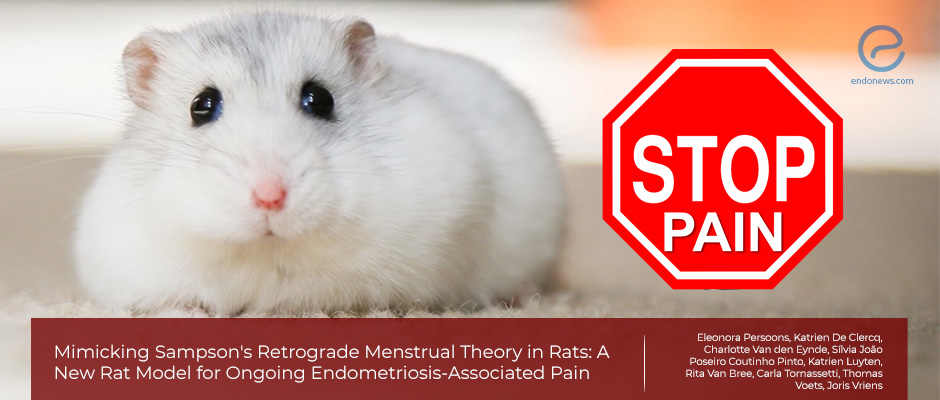New Rat Model of Endometriosis Could Help Researchers Develop New Treatments for the Condition
Sep 3, 2020
The new rat model shows signs of ongoing pain and reliably mimics the human disease.
Key Points
Highlights:
- Researchers developed a new rat model of endometriosis that shows signs of ongoing pain.
Importance:
- This new model could be an important tool to investigate the biology of endometriosis-associated ongoing pain and help to develop new therapies to tackle this symptom.
What's done here:
- Researchers first generated endometrial tissue in donor rats.
- They then injected this endometrial tissue in the abdominal cavity of recipient rats stimulating the development of endometriotic lesions.
Key results:
- The rats in which endometriosis was induced gained significantly less weight than control animals.
- The rats in which endometriosis was induced spent significantly more time on all four paws and shifted their body weight onto their front paws compared to control animals, a sign of ongoing pain.
- The rats in which endometriosis was induced did not show more signs of anxiety and stress compared to control animals as measured by the open field test.
- Supplementation of neuropeptides had no effect on endometriosis-associated pain as suggested by previous studies.
Limitations:
This model does not represent patients’ fertility problems and is not able to represent populations that are asymptomatic.
Lay Summary
Researchers in Belgium developed a new rat model of endometriosis. The animals showed signs of ongoing pain meaning that the model could provide a tool for researchers to develop potential new ways to treat the different symptoms of the condition including chronic pelvic pain.
Endometriosis is a deliberating condition affecting approximately one in 10 women of fertile age. Chronic pelvic pain, one of the symptoms of the disease, badly affects the quality of life of affected women. Currently available treatments that only offer limited relief and symptoms often come back with time.
In the present study, Dr. Joris Vriens and his team developed a new rat model and tested them for ongoing endometriosis-associated pain.
The lining of the uterus or endometrium of rats does not change in the same way as humans’ in preparation for pregnancy. Rats also do not menstruate and don't develop endometriosis. So to develop their new model, the researchers first generated menstrual endometrial tissue in the animals. Then they injected this tissue in the abdominal cavity of another set of animals. This resulted in the formation of new blood vessels and nerve fibers around the injected tissue and the formation of endometrial lesions similar to what is seen in humans.
When they compared the bodyweight and posture of rats that “had endometriosis” and those that did not, the researchers noted significant differences.
The "endo" rats gained significantly less weight in the two weeks following the procedure compared to control animals. This difference was maintained for the whole three-month duration of the experiment.
The researchers also found that the endo rats spent significantly more time on all four paws and shifted their bodyweight more on their front paws compared to control animals suggesting that they were in pain.
“We developed a rat model for endometriosis,” the researchers wrote but noted that their model does not reflect endometriosis patients’ fertility problems.
This interesting article was published in the "International Journal of Molecular Sciences".
Research Source: https://pubmed.ncbi.nlm.nih.gov/32230898
menstruation rat model ongoing pain

